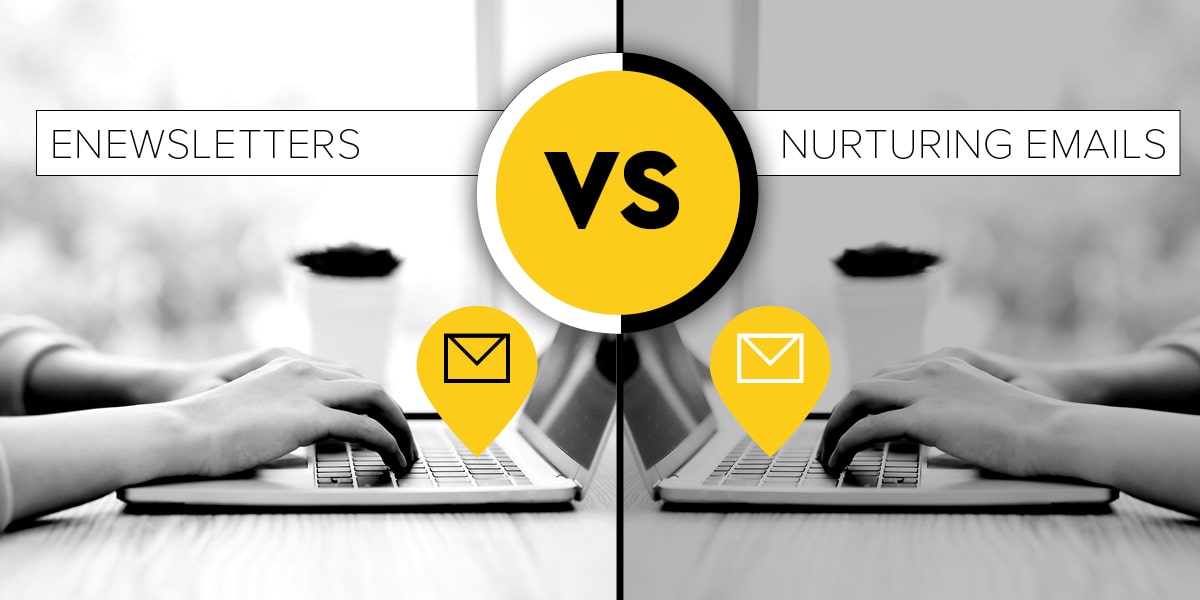Search for topics or resources
Enter your search below and hit enter or click the search icon.

An email address is a valuable thing. 81% of small businesses rely on email marketing to get new customers. And when someone trusts you with their email, it’s a big deal.
Your tone, frequency and content all impact whether they stay engaged — or hit “unsubscribe.” Two powerful tools for email marketing are enewsletters and nurturing emails, but they serve very different purposes.
At Zoe Marketing & Communications, we’ve crafted hundreds of these emails since 2020. Here’s how they compare — and when to use each.
Think of enewsletters as regular updates; they keep people engaged over time. Nurturing emails, meanwhile, are a short, targeted series that guides someone toward a purchase.
Here’s a closer look:
These arrive on a schedule (weekly, monthly, etc.). Subscribers opt-in because they want updates, insights or special offers from you. Your goal? Stay top-of-mind and build trust.
These are a series of 3-5 emails sent after a person takes action (like downloading a guide). They help educate prospects and lead them toward a decision — often a purchase.

People actively subscribe and expect regular updates. They stay until they opt-out.
These emails trigger automatically after an action (like filling out a form). Users don’t sign up directly, but each email includes an unsubscribe option.
Consistent and scheduled. They land in inboxes weekly, monthly or quarterly, always at the same time.
Triggered by an action. Timing is more intentional, often spread over a few weeks to gently guide your prospect.
Engagement, education and brand loyalty. They inform rather than sell, creating a long-term relationship.
Lead nurturing and conversions. They help answer questions, overcome doubts and move prospects toward a purchase.

Broad and varied — think company news, blog highlights, industry insights or events. A personalization touch (like the reader’s first name) can boost engagement.
Highly targeted. Each email builds on the last and relates to a specific interest the prospect already showed. Shorter (100-200 words) with a clear CTA (like booking a call or buying).
Casual, informative and friendly. Light storytelling and a personable tone work best.
More persuasive but still helpful and trust-building. The later emails in the sequence can be a bit stronger in nudging action.
Lower engagement (~20% open rate) since they go to everyone, including inactive subscribers.
Higher engagement (~69% open rate) because they are timely, relevant and tied to an action the recipient took.
Success is measured by open rates, click-throughs and unsubscribes.
Conversions matter most. Did the person download, sign up or buy? These actions indicate success.
Both enewsletters and nurturing emails build trust and engagement — but for different reasons. Understanding how to use them strategically will maximize your results.
If you’re ready to level up your email marketing, talk to us at Zoe Marketing & Communications. We can craft custom campaigns that nurture leads, build relationships and drive results.
Want to keep learning? Check out:
As Zoe Marketing & Communications’ content manager, Kim Kovelle brings over 20 years of writing and editing experience in metro Detroit. She has strong roots in community journalism and a knack for making complicated topics make more sense.
Topics:
